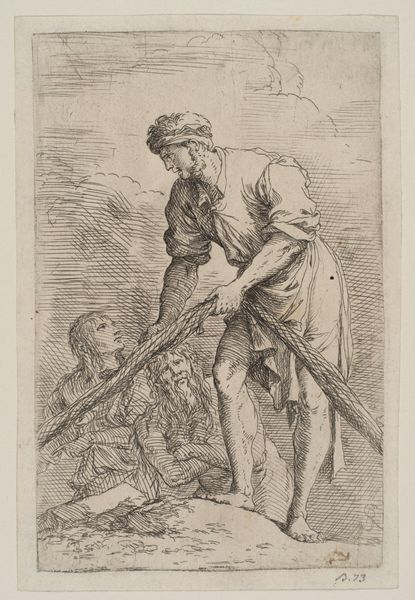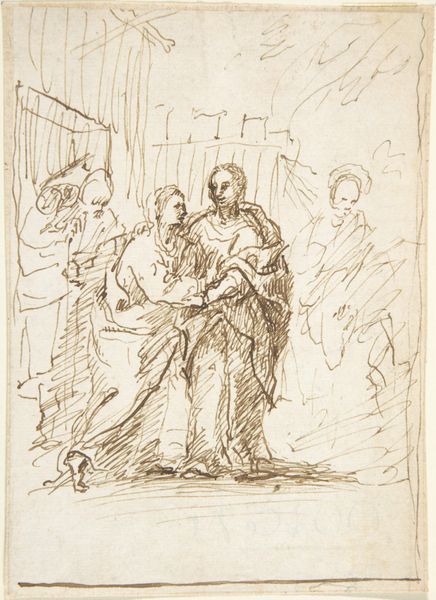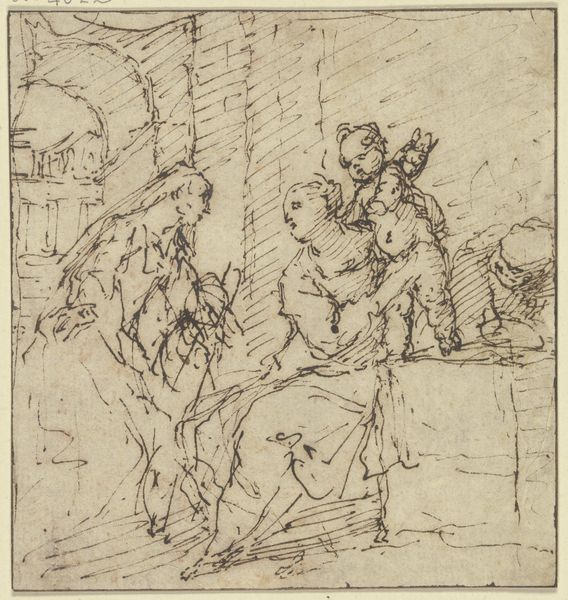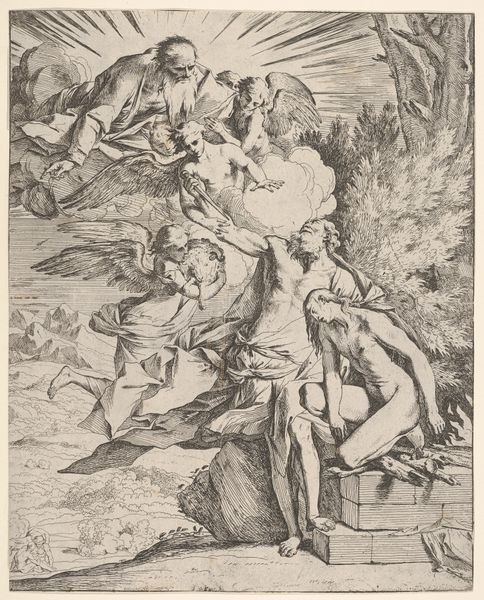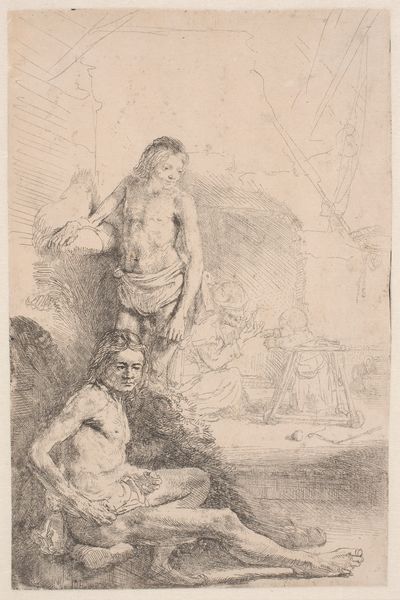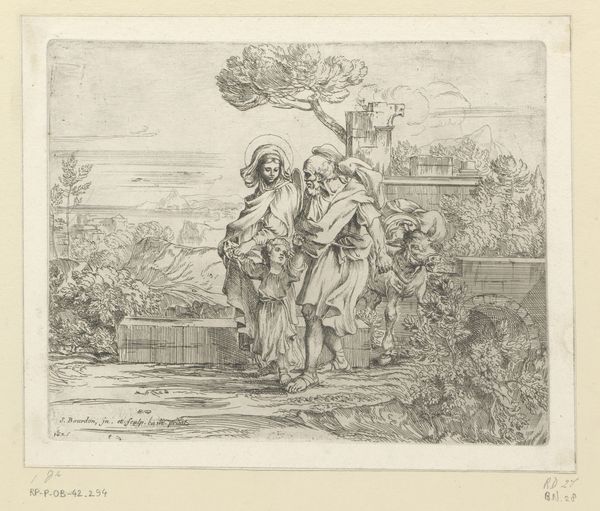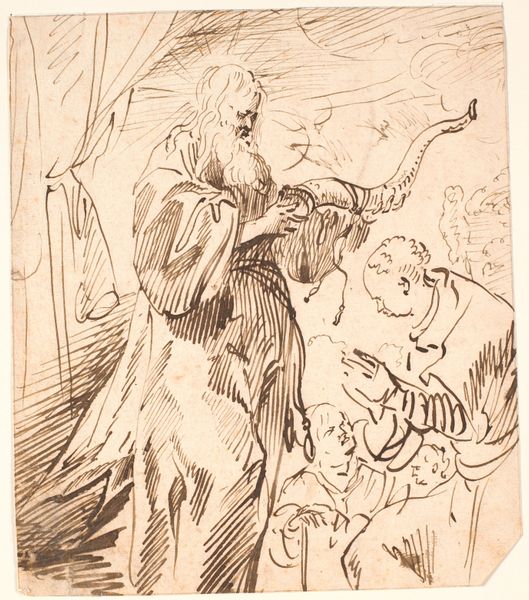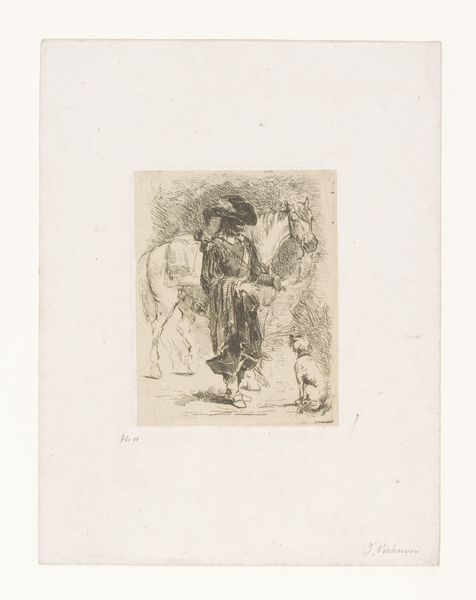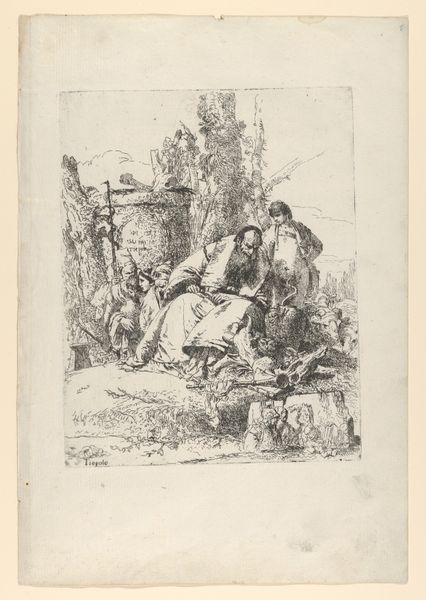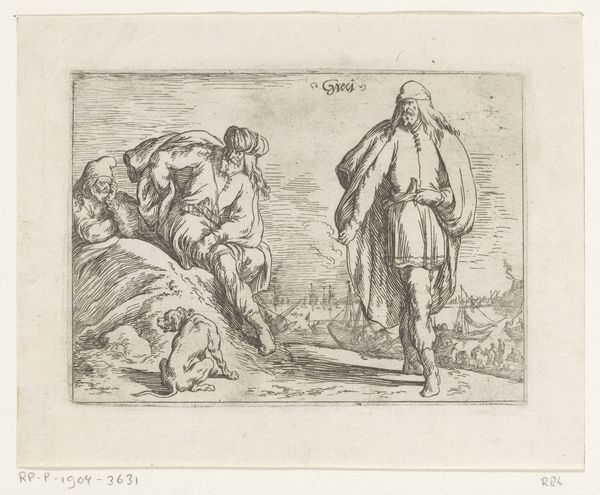
Staande oude man bij geknielde vrouw en kind dat stokken draagt 1708 - 1779
0:00
0:00
drawing, ink
#
drawing
#
baroque
#
figuration
#
ink
#
line
#
history-painting
Dimensions: height 243 mm, width 163 mm
Copyright: Rijks Museum: Open Domain
Editor: This ink drawing from the early 18th century, "Standing Old Man with Kneeling Woman and Child Carrying Sticks," by Honoré Coussin, strikes me as quite dramatic. There's a clear sense of narrative, perhaps even hardship. How do you interpret this work, particularly regarding its historical and social context? Curator: That's an excellent starting point. Visually, the contrast between the standing, gesturing man and the kneeling woman immediately creates a power dynamic. But beyond the immediate drama, consider the era. This was a time of immense social stratification, with patriarchal structures deeply embedded in European society. Who is this man and his relationship to the woman? What are they doing? Coussin lived during the tail end of witch trials and other injustices in the Baroque era, and there’s something evocative about a kneeling women near the base of the picture. Do you think the body language and presentation are accidental, or intentional? Editor: I see what you mean about the power dynamic. And knowing more about the artist and his background during that time gives me pause when viewing it now. It might be intentional and the presentation is symbolic of society's ills. Curator: Precisely. Consider also the lack of clear definition of place. Is this about a very specific episode in time or is it intended to evoke every-day subjugation. How does that reading influence your understanding of gender, class and even familial structures? What does this grouping of figures tells us about inter-generational ideas on submission and hierarchy? Does it evoke emotion in you? Editor: Yes it does! Considering your questions about history, Coussin's experience in history and identity makes this piece more layered than I initially thought. Curator: And that's precisely the point. Art, even from centuries ago, speaks to contemporary issues if we engage critically with its historical and social framework. By understanding the power structures implicit in the scene, we can appreciate the drawing as a potential critique of societal norms. Editor: Thank you so much. I'm taking away so much. I will surely never see work this way again!
Comments
No comments
Be the first to comment and join the conversation on the ultimate creative platform.

